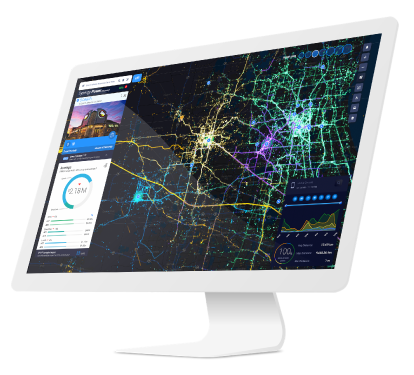Is your data leading you deeper into the dark?
Your evil stepmom is leading you deep into the woods (with the obvious intention of abandoning you there) and you realize your only hope of finding your way home is dropping trail markers periodically along your path.

What do you choose for these markers: breadcrumbs, or white pebbles?
When this happened to Hansel and Gretel– the first time– they dropped white pebbles. Easy to spot in the dark but subtle enough not to catch their stepmom’s eye, the pebbles led the two home safely. But soon enough, Hansel and Gretel found themselves being taken into the woods again, this time with nothing on hand to mark their trail but a piece of bread.
Breadcrumbs didn’t work quite as well; animals picked them up and ate them, and the wind swept them away. The rest of the story isn’t pretty.
This “fairytale” navigation technology, though simplistic, shows us how we can utilize location intelligence to help us find our way and make decisions. It also shows us how crucial it is to firmly establish the information on which we rely, or else our decisions will be hazy, and we may be led further into the dark.
More and more businesses are relying on big-data location intelligence to inform their decisions. There’s a growing industry around collecting, digesting and serving it up to eager companies. But those companies looking to follow the big-data trails need to ask themselves: are we using white pebbles, or breadcrumbs?
Take a small breakfast chain, for example, looking to expand from 5 to 15 storefronts. The team postulates that morning traffic patterns have a sizable impact on sales, so they look to the Department of Transportation for traffic data. To obtain their information, the government hires workers to drop rubber tubes and literally count the number of cars that pass by particular spots. Faulty and inefficient, this ‘breadcrumb’ method forces users to heavily extrapolate from their limited location information and rely on small sample sizes.
Considering the volume of real, raw location information that every one of us leaves a digital trail of daily (think cell phone and GIS data), counting vehicles on the roadside is simply archaic. Big-data recommendations that harness today’s mobile technology as the basis of their analyses are able to forge the clearest paths.
INRIX is a team of data scientists who’ve been working for over a decade to accumulate the most expansive network of meaningful transportation data in the world. Including 275 million vehicles, smartphones, cameras and other sensors that cover close to 5 million miles of roads in over 40 countries, the INRIX approach only increases in accuracy over time.
These are meaningful, accurate statistics. These are the white pebbles. Rather than relying on a rough estimate of how many vehicles may pass by an area on an average day, our small breakfast chain can choose locations for their expansions based on traffic volume by day of the week, direction, and time.
SiteZeus is on the cutting edge of providing the most actionable location intelligence around; we task ourselves with making sense of the vast data sets that contain information crucial to businesses everywhere. Served a la carte and scientifically tailored to any business’s needs, recommendations cooked up by our unique and advanced algorithms and now based on INRIX data are increasingly difficult—and often costly– to ignore.
Though central to our mission to bring big-data decision making to more and more businesses, INRIX is just one pebble dropped along the path. As technology develops in sophistication, scope and ubiquity, SiteZeus will be taking note, and collecting pebbles along the way.
To learn more about INRIX and the power of our platform, join us for our first Does data have a seat at your table webinar series.

Did you enjoy this post?
Give it a star rating to help us bring you great content!
Recommended Posts
